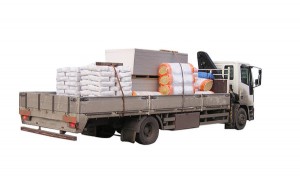
The Inspectors looked at the work health and safety risks of the load restraint equipment that was being used and the loading techniques that were employed on the 427 trucks that were transporting a broad range of different types of loads.
Four different load securing activities were specifically looked at:
- Using lashings and corner protectors
- Handling curtains
- Handling gates
- Tensioning chains and webbing
More information about the findings from the campaign can be found at http://www.deir.qld.gov.au/:
High risk practices (high risk tasks or equipment use) were noted in 48% of inspections. Some of the high risk practices observed included the use of dogs and cheater bars, worn or damaged load binders or winches, or where a single worker manually removes a gate which weighs over 12kg.
This indicates that the industry is going some way to reducing risks but unacceptably high levels of risk are still widespread.
The activity of placing lashings and corner protectors was assessed for 44% (186) of the 427 inspections and accounted for the highest proportion of high risk practices across all freight tasks:
- 76% of the inspections, which assessed this activity, noted that high risk practices were occurring.
- This activity was considered high risk when the practices involved: throwing chains or lashing over the load; climbing on the truck to place the chains, webbing, or other lashings tarpaulins or corner protectors over the load; or, where other workers were at risk of being struck and injured.
In keeping with the particular aim of the campaign, the activity of tensioning chains and webbing was assessed for 337 of the 427 truck inspections. High risk practices for this activity were most often noted in: steel 29%; timber/logging 29%; machinery 18% and other 19%. Use of dogs (with or without cheater bars) was observed most commonly for: steel 24%, machinery 16%; and other 15%.
The data from the campaign shows that high risk practices are evident across all types of freight tasks and especially for steel and timber/logging freight tasks. The use of dogs to tension chains is still common practice, particularly for steel and machinery.
Source:http://www.deir.qld.gov.au/workplace/resources/pdfs/securing_loads_report.pdf
It is a concern to the industry that many high-risk practices are still being used when securing loads that can put workers, drivers and road users at risk if a load falls off of a truck during transport.
Securing loads properly and safely is an important part of Occupational Health and Safety because it can adversely affect many people after it leaves the depot where it is loaded.
Supervision by responsible managers and proper training can be used to help address this problem long term.



